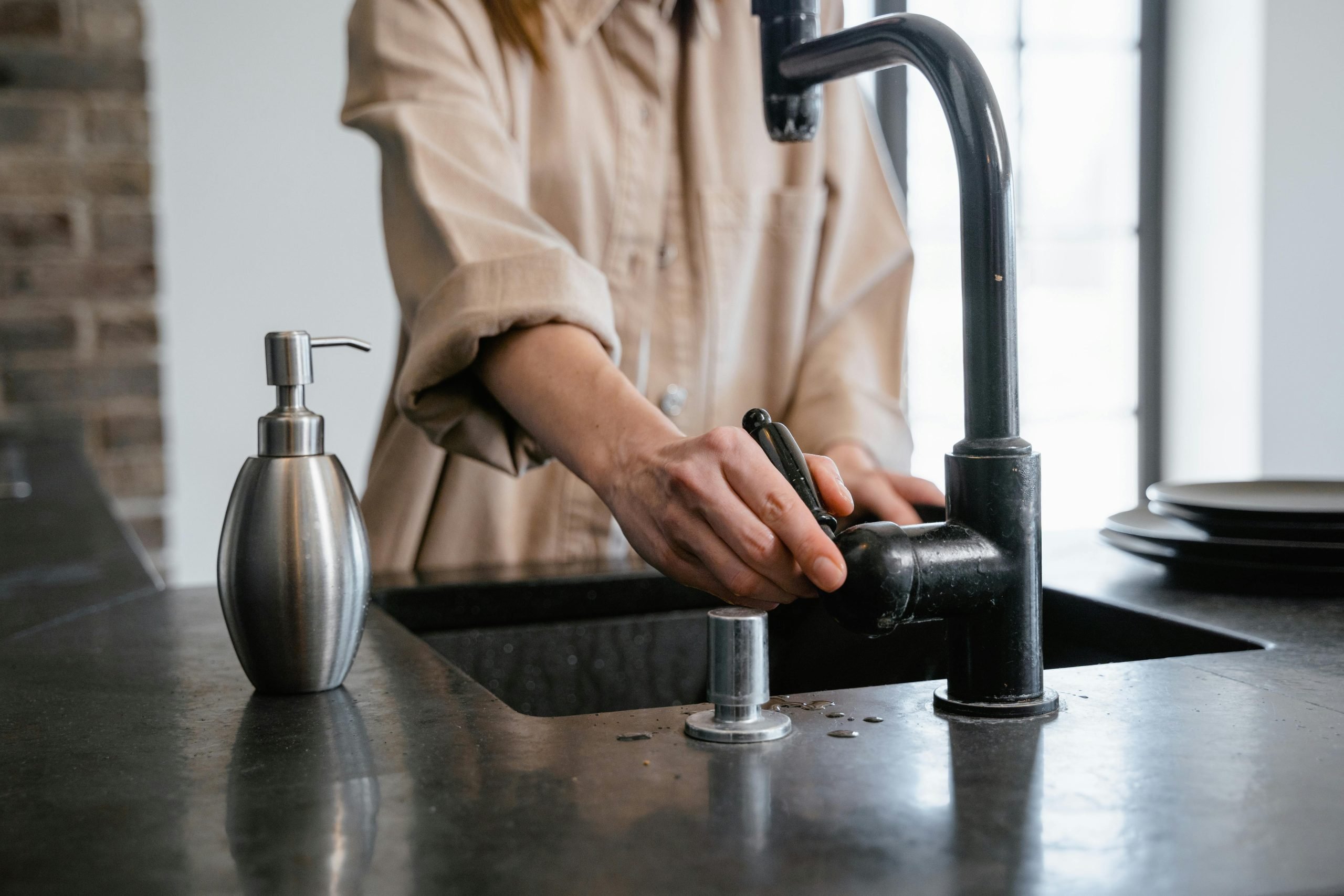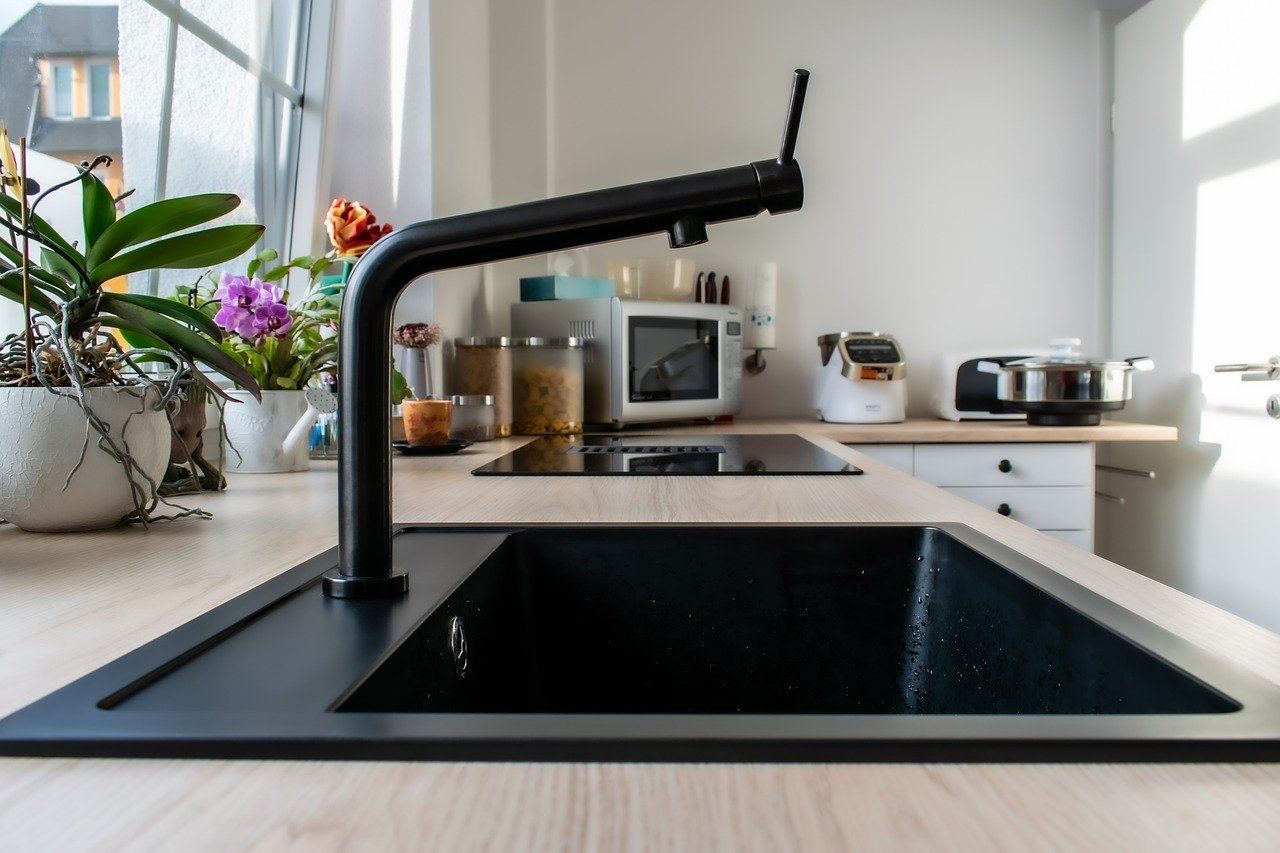Embark on a journey through the intricate world of plumbing, where the heartbeat of your home lies in a well-maintained system. As homeowners, understanding the ABCs of plumbing is not just a luxury but a necessity, and this comprehensive guide is here to illuminate the essentials. Service by Scott, a trusted family-owned and operated plumbing and maintenance company in Woodville, Texas, joins us on this exploration, bringing over 30 years of dedicated service to Tyler County and neighboring areas.
Service by Scott enriches this guide with its wealth of expertise, demystifying plumbing fundamentals. Whether you’re a seasoned homeowner or a novice in the realm of home maintenance, together, we’ll unravel the mysteries of your home’s plumbing system. From leak detection to water heater maintenance, this guide equips you with insights, ensuring your plumbing functions at its best. So, let’s dive in and discover the plumbing ABCs that ensure a smoothly flowing and well-maintained home.
Understanding Your Home Plumbing System
Your home’s plumbing system is like the circulatory system of your house, ensuring a constant flow of water for various daily activities. To comprehend how it all works, let’s start with a snapshot of the typical residential plumbing setup. At its core, your plumbing system consists of two main subsystems: the water supply system and the drainage system.
Water Supply System
This subsystem is responsible for bringing in fresh, clean water into your home. The journey begins at the main water supply line, usually connected to the municipal water source. From here, water travels through a network of pipes, branching out to different fixtures and appliances throughout your home. Each faucet, shower, and appliance has its dedicated water supply line, regulating the flow of water for specific needs.
Drainage System
On the flip side, the drainage system ensures the efficient removal of used water and waste. Wastewater from sinks, showers, toilets, and appliances is carried away through a separate set of pipes, ultimately connecting to the main sewer line or septic tank. Understanding the distinction between the water supply and drainage systems is crucial for troubleshooting and maintaining your plumbing.
Beyond pipes and fixtures, it’s essential to grasp the role of valves and shut-off points in your plumbing system. Valves control the flow of water, allowing you to isolate specific areas for repairs or in case of emergencies. Knowing where these valves are located can save you time and minimize potential damage during plumbing issues.
In essence, a foundational understanding of your home’s plumbing layout empowers you as a homeowner. It lays the groundwork for effective troubleshooting, helps in preventing issues, and ensures that you can communicate more effectively with plumbing professionals when needed. As we explore further, we’ll delve into the specifics of each subsystem, providing you with a holistic view of your home’s plumbing infrastructure.

Common Plumbing Issues and DIY Troubleshooting
Plumbing issues are an inevitable part of homeownership, but armed with a basic understanding, you can navigate these challenges with confidence. Let’s explore some common plumbing problems and equip you with the know-how to troubleshoot them effectively.
Identifying and Addressing Common Leaks
One of the most frequent plumbing issues homeowners encounter is leaks. Whether it’s a dripping faucet, a slowly leaking pipe, or a hidden issue behind a wall, leaks can lead to water wastage and potential damage to your home. Begin by checking for visible signs of moisture, water stains, or mold. If you spot a leak, the first step is to turn off the water supply to that specific fixture or, if necessary, shut off the main water supply. For minor leaks, you can often apply a temporary fix using plumbing tape or a pipe clamp. However, it’s advisable to seek professional assistance for a long-term solution.
Dealing with Clogged Drains and Basic Unclogging Techniques
Clogged drains are another common headache for homeowners. They can occur in sinks, showers, or toilets due to a buildup of hair, soap scum, or foreign objects. Before reaching for chemical drain cleaners, try using a plunger for sinks and toilets or a drain snake to dislodge blockages. For preventive maintenance, consider using drain screens to catch debris before it enters the pipes. If the clog persists, it might be time to call in a professional plumber equipped with the tools to tackle more stubborn blockages.
Understanding Water Pressure Variations and Solutions
Inconsistent water pressure can be both annoying and indicative of underlying issues. High or low water pressure can result from various factors, including a malfunctioning pressure regulator or sediment buildup in pipes. If you’re experiencing pressure problems, start by checking the pressure regulator and adjusting it if necessary. For low pressure, clean aerators on faucets and showerheads to remove any debris. If issues persist, it’s advisable to consult with a plumbing professional to identify and address the root cause.
Tips for Handling Minor Plumbing Repairs on Your Own
Empowering homeowners to handle minor plumbing repairs can save both time and money. From fixing a running toilet to replacing a worn-out washer in a faucet, having a basic toolkit with wrenches, pliers, and replacement parts can make a significant difference. Online tutorials and plumbing guides can provide step-by-step instructions for various DIY repairs. However, it’s essential to recognize your skill level and when to call in professionals for more complex issues to avoid exacerbating the problem.
As we navigate the common plumbing issues and DIY troubleshooting techniques, remember that proactive maintenance and timely interventions can significantly extend the life of your plumbing system. By understanding these common challenges, you’ll be better prepared to keep your home’s plumbing in optimal condition.
Sewer Line Service: What You Need to Know
Your home’s sewer line may not be visible, but its health is paramount to the overall well-being of your plumbing system. In this section, we will delve into the essential aspects of sewer line service, helping you understand why it’s crucial and how to ensure its longevity.
Importance of a Healthy Sewer Line
The sewer line plays a pivotal role in transporting wastewater from your home to the municipal sewer system or septic tank. Any disruption or damage to this vital component can lead to unpleasant consequences, including sewage backups and potential damage to your property. Recognizing the significance of a healthy sewer line underscores the importance of regular inspection and maintenance.
Signs of Sewer Line Issues
Identifying potential issues with your sewer line early can prevent major disruptions and costly repairs. Common signs of sewer line problems include slow drains, gurgling noises in pipes, foul odors emanating from drains, and sewage backups. If you notice any of these signs, it’s crucial to address them promptly to prevent further damage to your plumbing system and property.
Professional Sewer Line Inspection and Maintenance
Regular sewer line inspections conducted by qualified professionals are integral to the health of your plumbing system. Advanced technologies, such as video inspection cameras, allow plumbers to assess the condition of your sewer line without invasive measures. This proactive approach can reveal issues like tree root intrusion, pipe corrosion, or blockages. Depending on the findings, preventative measures such as hydro-jetting or rooter services may be recommended to maintain optimal sewer line functionality.
Repair Options for Damaged Sewer Lines
In the unfortunate event of a damaged sewer line, prompt action is necessary to prevent extensive damage. Traditional methods like trenching and replacing the damaged section of the pipe are effective but can be disruptive and time-consuming. Alternatively, trenchless sewer line repair techniques, such as pipe lining or bursting, offer a minimally invasive and efficient solution. Consulting with a reputable plumbing service, such as Service by Scott, can help determine the most suitable approach based on the specific nature and extent of the sewer line damage.
Understanding the dynamics of sewer line service equips homeowners with the knowledge needed to safeguard their plumbing systems. Regular maintenance and swift action in response to warning signs can significantly contribute to the longevity and efficiency of your sewer line, ensuring a seamless flow for years to come.

Water Heater Servicing: A Homeowner’s Guide
Your water heater silently works behind the scenes, providing the comfort of hot water for daily activities. In this section, we’ll explore the vital role of water heaters in your home, understand signs of potential issues, and equip you with the knowledge to ensure their efficient and safe operation.
The Vital Role of Water Heaters
Water heaters are unsung heroes in our homes, delivering the luxury of warm showers, clean dishes, and sanitized laundry. Whether you have a traditional tank-style or a modern tankless water heater, understanding their functionality is key to ensuring a consistent hot water supply. Tank-style heaters store and heat a specific amount of water, while tankless models heat water on demand, offering energy efficiency and endless hot water.
Signs of a Malfunctioning Water Heater
Recognizing the early warning signs of a troubled water heater is crucial to preventing unexpected breakdowns. Common indicators include inadequate hot water supply, unusual noises like popping or rumbling, water discoloration, and leaks around the unit. If you notice any of these symptoms, it’s advisable to address them promptly. In some cases, a simple flush of the tank or replacement of a faulty heating element may be sufficient, while more complex issues may require professional intervention.
Regular Maintenance Tips for Water Heaters
To keep your water heater operating at peak efficiency, incorporating regular maintenance into your routine is essential. Flushing the tank to remove sediment buildup, checking and replacing the anode rod to prevent corrosion, and inspecting the pressure relief valve for proper functioning are integral tasks. Additionally, adjusting the thermostat to a moderate temperature not only saves energy but also prevents scalding. Following the manufacturer’s guidelines for maintenance, which are often outlined in the user manual, ensures that you’re taking the right steps to extend the lifespan of your water heater.
When to Call in a Professional for Water Heater Service
While homeowners can perform some maintenance tasks, certain issues require the expertise of a professional plumber. If you encounter persistent problems, such as a leaking tank, a malfunctioning thermostat, or a complete lack of hot water, it’s time to seek professional assistance. A certified plumber can diagnose the issue accurately, recommend necessary repairs or replacements, and ensure the safe and efficient operation of your water heater.
Understanding the ins and outs of water heater servicing empowers homeowners to maintain a reliable and efficient hot water supply. Whether you opt for DIY maintenance or enlist the help of a professional, a proactive approach to water heater care ensures its longevity and the comfort it brings to your daily life.
Commercial Plumbing
While the plumbing needs of residential and commercial spaces share some similarities, the scale and complexity of commercial plumbing systems present unique challenges. In this section, we’ll explore the intersection of residential and commercial plumbing, understanding the specific requirements and common issues faced by businesses and industries.
Understanding the Intersection of Residential and Commercial Plumbing
Commercial plumbing extends beyond the familiar fixtures found in homes to accommodate the diverse needs of businesses and industries. Restaurants, office buildings, manufacturing facilities, and healthcare institutions all demand specialized plumbing systems tailored to their specific operations. From larger pipe diameters to accommodate higher water volume to the installation of industrial-grade fixtures, commercial plumbing adapts to the demands of high-traffic environments. Understanding this intersection is crucial for businesses to maintain optimal functionality and adhere to industry regulations.
Common Commercial Plumbing Issues
Just like residential plumbing, commercial plumbing systems are susceptible to various issues that can disrupt daily operations. Common challenges include leaks, clogged drains, and issues with sewer lines. However, the impact of these issues can be more severe in a commercial setting due to the increased usage and dependency on efficient plumbing. Prompt attention to these problems is vital to prevent disruptions to business activities and maintain a safe and hygienic environment for employees and customers.
Importance of Professional Expertise in Commercial Plumbing
The complexity of commercial plumbing systems often requires a higher level of expertise. Service by Scott provides businesses with access to licensed and experienced commercial plumbers who specialize in addressing the unique challenges posed by larger and more intricate setups. From plumbing maintenance to backflow prevention and industrial-grade water heater installations, their professionals are well-versed in the intricacies of commercial plumbing. Regular inspections and proactive maintenance conducted by Service by Scott ensure that potential issues are identified and resolved promptly, safeguarding the seamless operation of businesses in Tyler County and beyond.
In the world of commercial plumbing, partnering with a trusted and experienced service provider like Service by Scott is paramount. Their commitment to excellence, combined with decades of industry knowledge, positions them as a reliable partner for businesses seeking top-tier commercial plumbing solutions in Woodville, Texas, and the neighboring communities.

24/7 Emergency Service: What to Do in Plumbing Emergencies with Service by Scott
Plumbing emergencies can strike at any moment, often catching homeowners off guard. In this section, we’ll explore the key steps to take during a plumbing crisis and highlight the invaluable support offered by Service by Scott.
Identifying Plumbing Emergencies
Plumbing emergencies come in various forms, from sudden leaks and burst pipes to sewage backups and malfunctioning water heaters. Recognizing the signs of a plumbing crisis is crucial for initiating swift action. Water pooling, unusual sounds in the pipes, or a sudden drop in water pressure are indicators that warrant immediate attention. In times of crisis, every minute counts, making it essential for homeowners to stay calm and act promptly.
Immediate Steps to Take
As the first line of defense before professional help arrives, there are crucial steps homeowners can take to mitigate the impact of a plumbing emergency. Shutting off the main water supply is the most effective way to halt water flow and prevent further damage. For localized issues, such as a burst pipe or a malfunctioning appliance, turning off the water supply to that specific area can be equally effective. Additionally, it’s advisable to turn off the water heater to prevent potential hazards.
Service by Scott’s 24/7 Emergency Assistance
When faced with a plumbing emergency, having a reliable partner like Service by Scott can make all the difference. As a family-owned and operated business with over 30 years of service in Woodville, Texas, and neighboring areas, Service by Scott understands the urgency of plumbing crises. What sets them apart is their commitment to providing 24/7 emergency services. Day or night, weekends or holidays, their team is ready to respond promptly to your call, bringing expertise and reassurance to homeowners in Tyler County and beyond.
Preparing a Home Emergency Plumbing Kit
In addition to knowing immediate steps, having a well-prepared emergency plumbing kit can be invaluable. This kit should include essentials like a pipe wrench, plumbing tape, a plunger, and a bucket. Familiarize yourself with the location of shut-off valves and keep important contact numbers, including Service by Scott, easily accessible.
Understanding what to do in a plumbing emergency empowers homeowners to take swift and effective action. With Service by Scott’s 24/7 emergency services, you can trust that help is just a phone call away, ensuring that your home is in capable hands during unexpected plumbing crises.
Conclusion
In unraveling the intricate world of plumbing, we’ve journeyed through the essential ABCs every homeowner should know. From understanding the nuances of your home’s plumbing system to tackling common issues with DIY troubleshooting, exploring sewer line service, delving into water heater maintenance, and navigating the realm of commercial plumbing, this comprehensive guide has equipped you with valuable insights.
Remember, proactive maintenance and swift action in the face of plumbing challenges can save you time, money, and stress. As we conclude this exploration, it’s crucial to highlight the importance of having a reliable partner in your plumbing endeavors. For over three decades, Service by Scott has been the trusted name in Woodville, Texas, and surrounding areas, providing top-tier plumbing services. From routine inspections to 24/7 emergency assistance, their family-owned and operated business brings expertise, dedication, and a commitment to excellence.
Take the next step in securing the health and longevity of your home’s plumbing. Contact Service by Scott today – the experts who understand the intricacies of residential and commercial plumbing, ensuring that your plumbing system functions seamlessly, day or night. Don’t wait for a crisis to strike; let Service by Scott be your proactive partner in maintaining a reliable and efficient plumbing system for years to come.
FAQs
How can I prevent plumbing issues in my home?
Regular maintenance is key. Schedule routine inspections, address minor leaks promptly, and avoid flushing non-degradable items down drains. Additionally, know the location of shut-off valves for quick response in emergencies.
What should I do if I discover a sudden water leak?
First, turn off the main water supply to prevent further damage. Then, assess the source of the leak. If it’s a minor issue, you can use plumbing tape or a pipe clamp as a temporary fix. However, it’s advisable to contact a professional plumber for a more permanent solution.
How often should I schedule professional plumbing inspections?
For preventive maintenance, it’s recommended to schedule professional plumbing inspections annually. However, if you have an older plumbing system or live in an area with hard water, more frequent inspections may be beneficial.
Are there DIY methods for unclogging drains that actually work?
Yes, there are effective DIY methods for unclogging drains. Try using a plunger for sinks and toilets, or a drain snake for more stubborn blockages. Additionally, preventive measures like using drain screens can help minimize clogs.
When is the right time to upgrade my water heater?
Consider upgrading your water heater if it’s over 10 years old, showing signs of consistent issues, or if you’re looking to improve energy efficiency. Consulting with a professional plumber, like Service by Scott, can help you make an informed decision based on your specific needs and circumstances.

